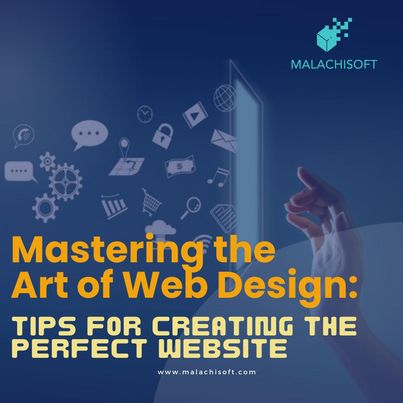Creating the perfect website is an art that blends creativity, functionality, and user experience seamlessly. In today’s digital age, a website is often the first point of interaction between a business and its audience. In this blog, we will explore essential tips and practical steps to guide you in achieving the perfect web design for your project.
1. Understand Your Purpose and Audience:
Clearly define the purpose of your website and who your target audience is. Understanding their needs and preferences will help shape your design accordingly.
2. Plan and Research:
Conduct thorough research about your industry, competitors, and current design trends. Use this knowledge to create a detailed plan for your website’s design, structure, and functionality.
3. Focus on User Experience (UX):
Prioritize user experience by creating intuitive navigation, a clean layout, and easy-to-find information. A seamless and enjoyable user journey is fundamental to a successful website.
4. Optimize for Mobile Devices:
Design a responsive website that adapts seamlessly to different screen sizes and devices. A significant portion of internet users access websites through mobile, so mobile optimization is non-negotiable.
5. Keep it Simple and Intuitive:
Less is often more in web design. Aim for a clean, uncluttered design that allows users to find what they need without confusion. Intuitive navigation and clear calls to action are essential.
6. Prioritize Page Loading Speed:
Optimize images and code to ensure your website loads quickly. Slow-loading websites can deter visitors and negatively impact search engine rankings.
7. Utilize Strong Visuals and Graphics:
Incorporate high-quality images, graphics, and videos to enhance your website’s visual appeal. Visuals play a crucial role in capturing and retaining visitors’ attention.
8. Choose the Right Color Palette and Typography:
Select a color scheme that aligns with your brand identity and appeals to your target audience. Additionally, choose fonts that are easy to read and complement your design.
9. Consistency is Key:
Maintain consistency in design elements such as colors, fonts, buttons, and layouts throughout your website. A cohesive design enhances professionalism and user experience.
10. Test Rigorously:
Test your website across various browsers, devices, and screen sizes to ensure it functions correctly and looks appealing everywhere. Address any issues promptly.
11. Seek Feedback and Iterate:
Gather feedback from peers, users, or focus groups and use their insights to make necessary improvements. Continuous iteration is vital for a successful web design.
12. Stay Updated and Evolve:
Keep yourself updated with the latest design trends, technologies, and best practices. An evolving website that embraces new trends will stay relevant and engaging.
Achieving the perfect web design involves a careful blend of creativity, user-centric focus, and technical proficiency. By following these tips and incorporating them into your design process, you’ll be well on your way to crafting a visually stunning and highly functional website that resonates with your audience. Happy designing!
